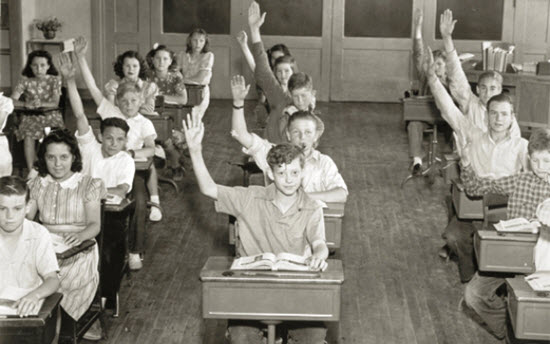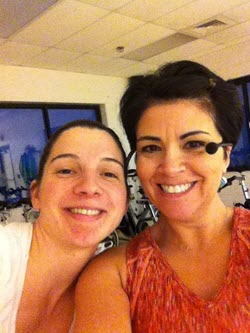
I wasn't sure how to answer this question emailed to me from a new Instructor. So I blasted it out to a bunch of Smart & Talented Instructors I know for their responses.
John:
You and I have exchanged emails before. I am a relatively new instructor (at age 48!)…. Just got my first steady teaching gig (3 classes per week). What I find to be the single biggest challenge as a new instructor is music- music flow, and knowing what drills or activities to do to what music. It is SUPER easy to get a certification…. I am Madd Dogg certified, and will be attending my first WSSC this May. I feel at such a loss though when it comes to setting up a class…. And feel as though I let hours of time evaporate listening to music but not knowing how to incorporate it effectively into what I am doing….
I have a ton of respect for what you do and have been following your facebook page and blog for sometime. I am happy to buy an ICI/pro membership, I am just reluctant at this point to invest in any more resources that I underutilize. Wondering what advice you might have?
Thanks so much for your time!
Irene
Thanks for writing Irene! Here are a few ideas for you...
First from contributor Chris Hawthorne AKA Chrispins - that's a link to her excellent website. You can find all of Chris' informative ICI/PRO articles here)
Hi John,
Happy to help. Here's my answer:
The best way to know what drills or activities to do with your music is to find the BPM (beats per minute) of the songs you would like to use. I use this handy website to help me figure the BPM of new songs : http://www.all8.com/tools/bpm.htm There are also several free apps that will do the same thing.
Once I have the BPM I transfer them into RPM (usually that means dividing by 2). Then I can plug the songs into my profile. Hills are 60-80 RPM's and Flats are 80-110.
Another helpful tip is to keep song folders so that you can easily have the songs you want to 'plug in' to your profiles. I use Spotify, but you can do this in iTunes as well. You can have folders of songs labeled by BPM, or you can label them with titles such as 'Warmup', 'Flats', 'Hills', 'Cool Down', etc.
And don't be afraid to use other people's profiles and/or music until you get the hang of it. There a a lot of great instructors sharing their profiles and playlists out there on Facebook, blogs, and sites like ICI/PRO and Pedal-On.
Good luck!
Chris
Next up is Grit Cycling's Rockstar Instructor Cassie Piasecki
Hi,
In response to her simple, yet complicated questions. Here is my answer:
The most basic way to address this is to think of your class in two parts.
1. The design of your class
2. The music you will play to fit the design
For me, the design comes first. I decide what I want to do in the class. The warm up is first, and the cool down is last. What goes in between? I teach the "newer vertical" of Indoor Cycling or rhythmic style classes. So for me, "everything in between" is usually a combination of drills that move side to side or front to back, climbs and sprints.
When it comes to listening to music, it should clear right from the first listen, "this is a sprint song" or "this is a climb". If you have to spend a lot of time deciding what type of song it is, it probably isn't a good song for you to use. Within my iTunes, I create playlists dedicated to different sections of my classes. I have playlists called "Climbs", "Sprints", Weights, "Figure 8s", "Warm Ups", "Meditations" and "Cool Downs", for example. When I find a song that fits a category, I add it to the proper playlist.
When building my class, I take the basic design and plug in the songs. This works well for the beginner instructor.
Still having a difficult time? Stop searching for "new" music, and use music that you know and love. Your energy will shine because it's a song that you feel comfortable playing vs. looking crazy because you are trying to make a song that you don't know "fit or work".
Cassie
Cassie is also a Social Media expert - she offers her ideas on tracking the success of your social media campaigns in
this episode of the podcast. I teach either performance-oriented timed interval rides or visualization rides. In the first case, I pick music to accompany the intervals based on rhythm (appropriate cadence, level of aggression) and length. It is definitely simplest to have intervals of fixed length and layer songs on top which motivate riders.
But visualization rides require helping your participant engage with the course. I ride my bike outdoors year-round and I base my visualization rides on routes I've been on. I tend to turn to my own feelings during those rides. Over rolling hills on a beautiful day, I can get lost in a smooth electronic track with a steady beat. On sharp, punchy climbs with the wind in my face, I need the hook from an aggressive rap track or a wailing guitar from a punk rock song. From my outdoor experiences, knowing there are multiple climbs or anticipating a hard sprint in a group ride, it is okay for the music to run on a little long, to build up, to create some frantic energy.
To manage musical flow, you have to understand the physical demands of the ride. If it's going to be a long, hard ride with little rest, don't be afraid to keep things aggressive - but remember to lighten up at the end of an effort. Every climb eventually ends, every sprint has a finish line, and, at some point, you can always choose to turn out of the wind. Your music should do the same.
Dunte and I had a fun conversation here where you can hear why I instantly added him to the Smart & Talented list 🙂
I've got a bunch more responses that you'll find here. But before you go... how would you have responded?
Host of the Indoor Cycle Instructor Podcast - the #1 Internet radio show for and about Spinning / Indoor Cycling Instructors and Cycling Studio owners.
John is a member on the AFS (Association of Fitness Studios) Advisory Council.
Holding certifications from; Schwinn, Heart Zones, Team ICG and Life Time Fitness, John's held regularly scheduled cycling classes between 1998 and 2015 when he moved to Florida.
When the weather permits, you'll find him riding and leading outdoor groups by himself or with his Tandem partner (wife) Amy.
Add Your Thoughts...
comments





